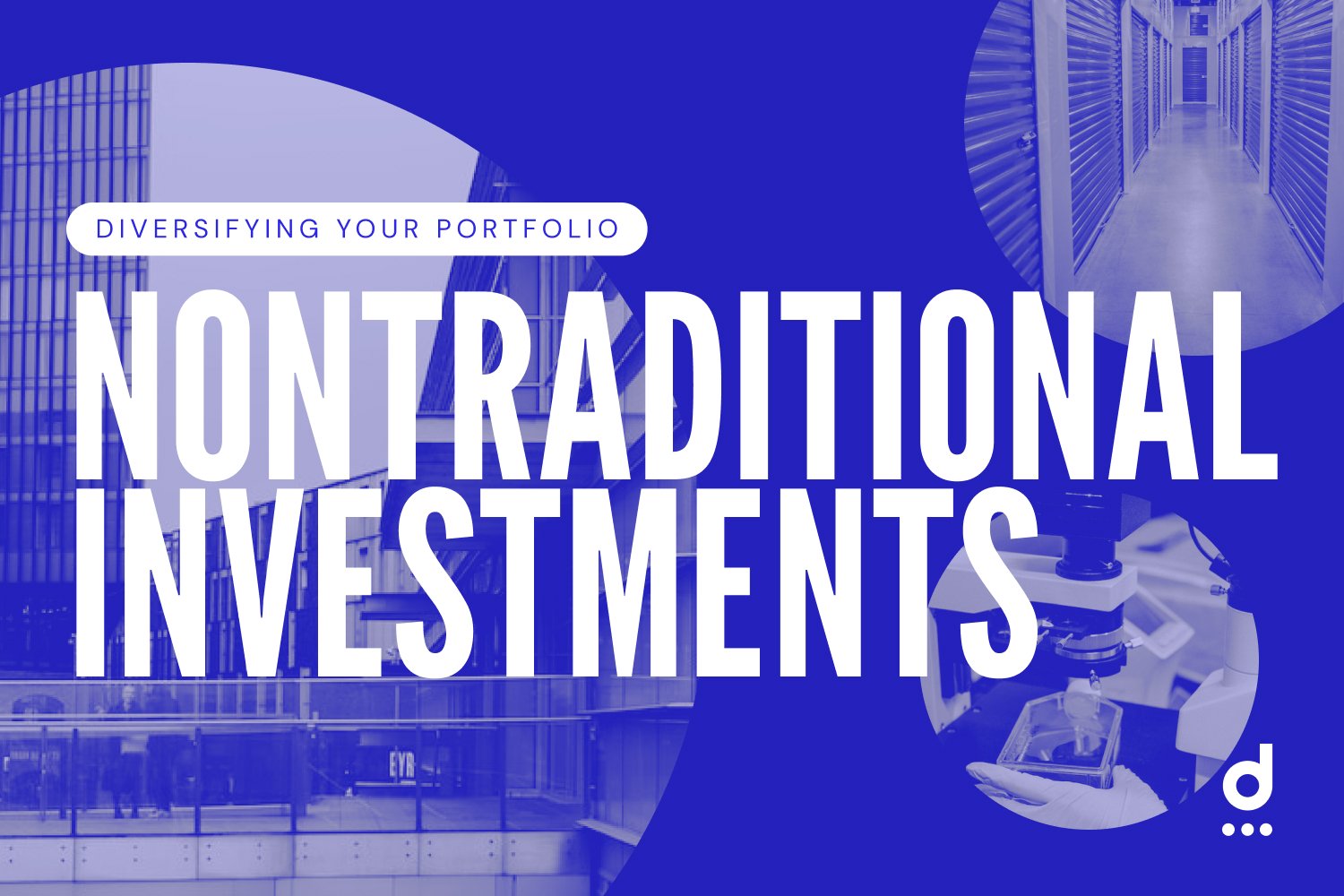Diversifying Your Portfolio: The Benefits of Nontraditional Real Estate Investments
Types of real estate property and how they affect the stability of your operation
Diversifying your investments with different types of real estate is more important than ever, given volatile markets and unpredictable global events that seem to keep increasing in frequency. We’ve seen a major rise in nontraditional investments in the finance world (think crypto and NFTs), but what’s next for real estate investments? The answer may be found in nontraditional real estate options. We’ll break down a few types of nontraditional property investments and help determine if they’re a fit for your portfolio.
Traditional Property Investments
Commercial real estate has been a widely-acknowledged form of investment since the early 1900s, and over the last century, just a handful of property types have been the frontrunners in major CRE portfolios across the world. We’ll break down the history of these mainstream types of real estate property to gain a better understanding of how the industry has historically worked.
Office
This sector of CRE contains several classes of office buildings, making it a diverse offering among traditional investments. Historically, demand for various classes of office space fluctuates based on the economy. During thriving economic circumstances, luxury offices with lots of amenities rule the space, and during tougher times, tenants opt for low-frills spaces unless they’re doing client-facing work. During the current shift to hybrid and remote work, office space investments are more of a gamble, but shortened lease terms and flexibility combined with extra amenities offered by employers suggest the investment will be resilient as trends change.
Retail
2022 saw a retail revival after the industry suffered through the first years of the Covid-19 pandemic. In fact, retail vacancies in the U.S. declined consistently throughout 2022 despite rising rental rates. In fact, availability fell to its lowest rate in over a decade. While some types of businesses in this sector experience fluctuating demand based on the economy, many businesses, like grocery stores and classic clothing retailers, maintain steady customer flow.
Industrial
Thanks to unprecedented growth in e-commerce, industrial investments are poised to lock in their place as one of the top-performing real estate property types in the coming years. With deliveries expected to continue at a rapid pace, owners and investors can leverage industrial investments to build a more resilient supply chain. With construction costs at an all-time high, industrial options may require higher up-front capital but have the potential to become a stabilizing force in your portfolio.
Changing Times Create New Opportunities
Diversifying your investment portfolio is a great way to hedge against economic uncertainty. While traditional CRE investments offer a degree of versatility, non-traditional options and niche specialties can provide resilient additions to your investment options. Keep reading for a breakdown of two emerging trends in the nontraditional CRE market.
Medical Real Estate
The healthcare industry is experiencing a significant boom as the U.S. population ages. Thanks to a growing number of older clientele and rising popularity of new healthcare offerings like concierge medicine (expected to grow over 10% annually through 2030), medical buildings have become one of the most appealing types of properties in real estate. In fact, as of 2019, medical offices made up 40% of the sector’s value. Medical care is considered a stable industry since health choices aren’t generally based on economic factors. This allows for longer-term leases and makes an overall stable addition to your assets.
<Daniel, could we make a “Trend You Should Know” graphic that could be utilized in more articles moving forward as well? Should help to break up large pieces of text and act as a fun, identifiable snippet for anyone skimming these pieces.>
Trend You Should Know: Co-Tenancy
Medical buildings are commonly co-leased to several related practices. Start by leasing your main space to a primary care provider, and add tenants who offer services like specialized medicine, holistic care, or pharmacy.
Self-Storage Real Estate
Dottid’s home state of Texas boasts the most storage facilities of any U.S. state. Get a demo of our software today and grow your portfolio more efficiently.
According to studies by Neighbor.com and Storage Cafe, the number of American households renting storage units has risen by over 28% in recent years. Today, more than 1/3 of Americans are using self-storage facilities—mostly to hold furniture. Thanks to the rise of the home office and the 2020 residential real estate boom, many household furniture items were displaced, and storage units were the solution. Thanks to its inexpensive operating costs and low-touch nature, self-storage tends to be a low-maintenance investment opportunity.
Why Break from Traditional Investments?
Changes across all property types in real estate have rapidly taken hold over the last few years. Diversifying your portfolio outside of traditional CRE investments is more than a reaction to these changes: it’s a smart move to future-proof your operation. By building out a niche specialty, you increase your resilience against unpredictable economic tides, improve your profitability with stable long-term tenants, and become a trusted expert in some of the fastest-growing trends in real estate today.

